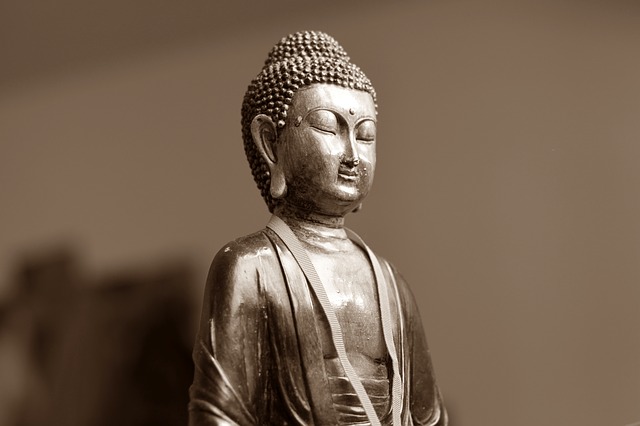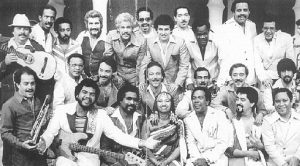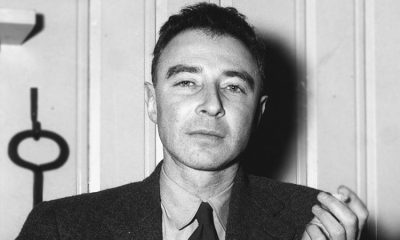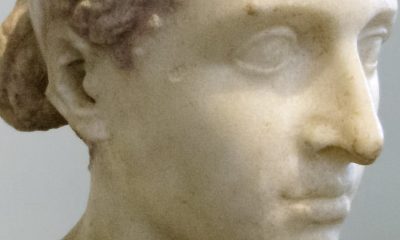Culture
Gautama Buddah

Gautama Buddah Biography
Siddharta Gautama, better known as Buddha Gautama was a sage on whose teachings Buddhism was founded. It must be emphasized that Buddha Gautama is not a god nor the only or first Buddha since Buddhist cosmology affirms that only humans can achieve Buddhahood, that is, reach enlightenment.
He was born in the Sakia republic in Kapilayastu, in the foothills of the Himalayas, the current border between Nepal and India, 560 BC. He died in Kusinagara, today Kasia in present-day India in 480 BC. He taught about the middle path between sensual complacency and strict asceticism. His figure, his speeches, and rules were summarized and memorized by his followers, apparently by oral tradition until they were written after 400 years of his death.
About his life, we only have fragments that come from three great sources: the Vinaya, the sutta-pitaka and the buddhacarita of Asvaghosa, texts written after his life. And in his biography, legends and traditions are mixed that take us away from exact dates and acts.
Even so, it is certain that he was part of a high caste family. His father was Suddhodana, monarch of the Sakya, a clan of the region where he was born. Her mother, Maya, did not know her because she died a week after her birth. His childhood and adolescence were his own courtesan origin, that is, with extensive studies. He also married his cousin Yasodhara and had a son named Rahula.
Being 29 years affected by his good economic and social condition and reflecting on the sufferings of his peers, he decided to leave the palace to find the cause of human pain and a way to be free. Thus he gave himself to rigorous asceticism but did not find any knowledge.
After many years of meditation without results, the full moon day of Visakha (May of 523 a.) Seated under a sacred fig tree in Uruvela, next to the river Ganges, decided that it would not move from there until reaching the true knowledge. Which came during the night because he had overcome the temptations that the god Mara had put him to get him away from his goal and Gautama gained enlightenment and became the Buddha, that is, the Enlightened One.
On the basis of his knowledge, he dedicated himself to preaching the dharma which is the supreme doctrine or law of all things. His first disciples were five followers of asceticism his companions before whom he delivered his first sermon known as Discourse on the movement of the wheel of dharma and in which he explained for the first time the doctrine of the Four Truths. Here is a fragment of what was collected much later: “Only this Eightfold Noble Path; that is, Right Understanding, Right Thought, Right Language, Right Action, Straight Life, Straight Effort, Straight Attention and Straight Concentration. This, O monks, is that middle path that the Tathagata has penetrated that generates the vision, that generates knowledge, that leads to peace, that leads to wisdom, that leads to enlightenment and that leads to Nibbana.
This, O monks, is the Noble Truth of Suffering. Birth is suffering, old age is suffering, the disease is suffering, death is suffering, associating with the undesirable is suffering, separating from what is desirable is suffering, not getting what you want is suffering. In short, the five aggregates of adherence are suffering.”
These five companions were the first members of the sangha (the community) that was expanded during the following years because the new faith was spreading and thus the organization of Bhikky, that is, the monastic community of the nascent Buddhism.
Buddha Gautama escaped after an assassination attempt at the hands of his cousin Devadatta, then his family (wife and son) were converted to the new doctrine but soon after Buddha became ill with dysentery, which killed him at the age of 80. His body was incinerated, and the ashes were objects of worship that were distributed among the closest disciples and they were kept in ten funerary monuments.
Finally, Buddha did not leave any written work, all his knowledge and teachings were transmitted orally and years later it was transcribed in the Canon Palo. His doctrine was open to all social classes and is defined by some as:
“He defended that the being is subject to samsara, the wheel of births and deaths, in motion until the action (karma) does not stop it, understanding by karma the destiny of a living being conditioned by the acts performed in their previous lives.”
In his teachings he picks up the middle path that is the path that leads to liberation, the four noble truths (about suffering and its origin), the noble eightfold path that is a method to stop suffering and thus arrive at nirvana defined as “a dimension in which the consciousness that is totally unstructured and peaceful and, consequently, ends all suffering originated by the interaction of the psyche and the will with the conditioned world.”
On his appearance, there are records of his great beauty that made many people think that the path to stop suffering was linked with physical beauty, although this was never proposed by Buddha Gautama. They described it as “It equals the autumnal golden jujube; it is as clear and radiant as a fruit that, newly ripened, loosens its stem and falls from the palm tree. As well as a gold ornament, carved into the crucible by a skillful goldsmith, deftly beaten and arranged on a bright yellow cloth, it thus shines and shines. And even so, the good Gotama’s judgments are calm as his complexion is clear and radiant.” What shows us not only a great love and respect for Buddha Gautama but also the beauty of the words of his disciples.

Culture
Cleopatra

Biography of Cleopatra
Cleopatra (69 BC – August 12, 30 BC) was the last Queen of Egypt, belonging to the Ptolemaic dynasty. She was born in Alexandria, Egypt. Her father was Ptolemy XII and her mother was Cleopatra V Tryphena. Cleopatra married her brother Ptolemy XIII, as a strategy to maintain the reign, then they both inherited the throne in 51 BC. Cleopatra is said to have possessed exceptional beauty. Her father was not well-liked by his people as he showed little interest in the problems of the Egyptian people, He was a corrupt ruler who squandered the kingdom’s money on lavish parties.
She was able to maintain her throne thanks to the Roman help she received in exchange for her continuous bribes and promises of various tributes. The Romans supported the king because he promised them easy access to the gold and wealth of Egypt. In each conflict, Rome played the role of arbitrator in the popular uprising, Ptolemy, went to Rome in search of military aid to suppress it. His wife Cleopatra and one of her daughters were left as regents of the country, then his wife died. The Alexandrians placed Queen Berenice IV on the throne and sent a delegation to Rome to arbitrate the conflict between father and daughter.
Soon after, Ptolemy XII was able to defeat the army of Archelaus, second husband of Berenice IV, and was returned to the throne. To ensure power, he had his daughter Berenice executed, it was the year 55 BC. The king died four years later, leaving the throne to his daughter Cleopatra VII Philopator and his son Ptolemy XIII Dionysus II. Cleopatra was the first of this dynasty to learn to speak the Egyptian language; she also learned Greek, Hebrew, Syrian and Aramaic and possibly Latin. She was also educated in literature, music, political science, mathematics, astronomy and medicine.
The situation in Egypt was becoming worse, farmers suffered severe famines, the Egyptian currency was weakening and the slow bureaucracy was hindering recovery: the country was becoming increasingly dependent on Rome. In response, farmers staged uprisings and created bands of outlaws that caused great harm; Additionally, the royal family also did not have good relations. Her younger sister Arsinoe, disagreed with her policy of helping the Romans and wanted to reach the throne. Ptolemy XIII, very young and manipulable, was practically handled by three advisors who forced him to expel his sister from the throne by overthrowing her with a command led by his advisors Potino and Aquilas.
Cleopatra attempted to regain power, gathering a good army for this purpose, although she did not succeed. Soon conflicts broke out between the two brothers and spouses, which led to the overthrow of Cleopatra. However, when the Roman civil wars began: Julius Caesar went to Egypt and helped Cleopatra in the conflict with her brother. During the Alexandrian War, both Pompey and Ptolemy XIII died, and the legendary Alexandria Library was burned.
Cleopatra was first and foremost a solution for Julius Caesar, and also his lover, she tried to use her influence over Caesar to restore Egypt’s hegemony in the Eastern Mediterranean as an ally of Rome; the situation intensified when she had a son with Julius Caesar: Caesarion. When Julius Caesar was assassinated in 44 BC, Cleopatra attempted to seduce his immediate successor: consul Mark Antony. Being allies, they imposed their force in the East, creating a new Hellenistic kingdom that managed to conquer Armenia in 34.
Cleopatra, in addition to being a skilled ruler, was also known for her beauty and intelligence. She was fluent in several languages, including Egyptian, Greek, Hebrew, Syrian, and Aramaic, and was well-educated in literature, music, politics, mathematics, astronomy, and medicine. She used her charm and wit to strategically seduce powerful men in order to maintain control of her kingdom. She had a son, Cesarian, with Julius Caesar and later became the lover of Mark Antony. However, after the defeat of their alliance and the death of Antony, she was captured by Augustus and brought to Rome as a war trophy.
In the face of this situation, Cleopatra had herself bitten by an asp to end her life. Augustus took advantage of the situation to also murder her son Cesarión, thus extinguishing the Ptolemaic dynasty and later annexing Egypt to the Roman Empire. Cleopatra’s life inspired many writers, painters, sculptors and filmmakers. For example, between 1540 and 1905, over 200 plays, five operas and five ballets emerged. Let’s mention some important literary works: Cleopatra and Mark Antony (1606) by William Shakespeare, All for Love (1678) by the Englishman John Dryden and Caesar and Cleopatra (1901) by George Bernard Shaw. Even one of the comics of the popular Asterix the Gaul was dedicated to her.
Cleopatra has been the subject of many paintings and sculptures. Additionally, her life has been depicted in films, such as Cléopâtre (1899) and the famous and controversial 1963 production directed by Joseph L. Mankiewicz: Cleopatra, starring Elizabeth Taylor. Another production, Marco Antonio y Cleopatra was released in 1972. A more recent, less ambitious film was Cleopatra (1999). Later, the British Museum dedicated an exhibition to Cleopatra, sparking an interesting debate about her beauty.
Culture
History of Salsa

History of Salsa
Salsa is a musical genre that emerged in the late 1960s as a result of the fusion of Cuban son and other genres of Caribbean music, such as jazz and other American rhythms. Currently, there are various varieties of salsa, including Puerto Rican, Dominican, Colombian, Venezuelan and from other countries in Latin America. This music was mainly developed by Cuban and Puerto Rican musicians in the Greater Caribbean and the city of New York.
origins of salsa
The origins of salsa can be traced back to the 16th century in Cuba, where the Hispanic music brought by Spanish conquerors and the music brought by African slaves merged to create a wide variety of musical rhythms. Among these Afro-Cuban rhythms, the Cuban son, chachachá, mambo, son montuno, guaracha, guaguancó and charanga stand out. However, it is the Cuban son that constitutes the musical foundation of what we now know as salsa.
“Salsa and politics do not mix.” Hector Lavoe
After World War II, there was a large migration of Latin Americans from different countries in search of a better way of life. These people settled in New York in a marginal area of Upper Manhattan known as “the neighborhood”. It was in this environment that, at the end of the 1960s, the identity of a new Latin generation began to take shape and find its cultural voice through the musical current that we now know as salsa.
The Fania All Stars

Fania All Stars/ Font: Neodop, CC BY-SA 4.0, from Wikimedia Commons
In 1967, Italian-American businessman Jerry Masucci and Dominican flutist Johnny Pacheco, together with the Fania Records label, gave rise to the “Fania All Stars”. Pacheco’s idea was to bring together all the stars at Fania, a salsa project considered the largest and most successful in the history of salsa. Pacheco achieved what he had long desired, bringing together the voices of the greatest representatives of Latin music at the time, including Johnny Pacheco, Cheo Feliciano, Hector Lavoe, Willie Colon, Ricardo Ray, Bobby Cruz, Bobby Valentín, Ray Barreto, Mongo Santamaría, Justo Betancourt, Ismael Miranda, Rubén Blades, Pete Rodríguez, Roberto Roena, Nicky Marrero, Larry Harlow, Richie Ray, Hector Zarzuela, Yomo Toro and invited artists such as Tito Puente, Celia Cruz, and Eddie Palmieri.
Fania marked a before and after in the history of salsa with its concerts on five continents, which brought this musical genre to the forefront with the greatest artists of the moment.
Commercialization of salsa
In the 1970s, Johnny Pacheco and Jerry Masucci made the commercialization and marketing of salsa possible. This is how Latin music was exported not only to the European market, such as France, England, Spain and Italy, but also to Africa, Japan, Germany and the Scandinavian countries.
In August 1971, a meeting of all the label’s stars took place at the Cheetah club in New York, owned by Ralph Mercado, the company’s manager. From this important meeting came numerous records and a film, “Our Latin Thing”, which was very successful throughout Latin America. Five years later, Fania signed a distribution contract with the CBS company, trying to launch itself into the conquest of the English-speaking market.
During these years, some of the greatest hits in the history of salsa emerged, namely: “Anacaona” (1971) by Cheo Feliciano, “Llegó la banda” by Enrique Lynch and his ensemble, popularized by Hector Lavoe; “Quimbara” by Celia Cruz and Johnny Pacheco; “Llorarás” by Oscar de León; “El preso” by Fruko y sus Tesos; “Pedro Navaja” by Willie Colón and Rubén Blades. Previously, in 1969, Willie Colón and Hector Lavoe had recorded “Che Che Cole“, a song that would be considered a classic of salsa.
Fusions and new rhythms

Font: Facebook Orquesta de la Luz
During the 1980s and 1990s, new instruments, methods and musical forms (such as Brazilian songs) were adapted to salsa. In addition, new musical styles such as romantic salsa emerged and became popular in New York. This new manifestation of salsa was quickly assimilated by Puerto Rican artists such as Frankie Ruiz, Marc Anthony, Eddie Santiago and Cubans like Dan Den.
Salsa became an important part of music in countries such as Cuba, Puerto Rico, Colombia, Dominican Republic, Venezuela, Panama and distant countries like Japan. In the latter country, the Orquesta de la Luz emerged in 1990, which gained some popularity in Latin America by singing salsa songs in Spanish, Japanese and English.
“Dancing salsa is like raising the dead. It’s not just about listening. To enjoy salsa, you have to shed your inhibitions”. – Johnny Pacheco
From the late 1980s to the mid-1990s, after the boom of romantic salsa, sensual or erotic salsa took over the scene. Its main exponents were Eddie Santiago, Frankie Ruiz, Lalo Rodríguez, David Pabón, Willie González and Luis Enrique. Eventually, sensual salsa lost its popularity to the strong impulse of other Caribbean rhythms such as bachata and merengue. By then, salsa had already lost many of its great strongholds, including the deceased Hector Lavoe and Ismael Rivera. The new century brought a resurgence of hard salsa and old school, as in the case of Orquesta La 33 or the return of the trombone with Jimmy Bosch.
Origin of the term
In 1933, Cuban musician Ignacio Piñeiro used a related word for the first time in a Cuban son called “Échale Salsita” and in the mid-1940s, Cuban Cheo Marquetti emigrated to Mexico. Upon returning to Cuba, influenced by the spicy salsa in food, he used that name for his group: Conjunto los Salseros. In 1957 he traveled to Caracas, Venezuela, to give concerts and it was there that the word “salsa” began to be used on the radio.
With the start of the 21st century, salsa became one of the most important forms of popular music in the world.
Great figures of salsa
- Celia Cruz
- Isaac Delgado
- Rey Ruiz
- Tito Gómez
- Willie Colón
- Tito Puente
- Frankie Ruiz
- Marc Anthony
- Maelo Ruiz
- Willy Rivera
- Josimar
- Lucho Macedo
- Cheo Feliciano
- Willie González
- La India
- El Gran Combo de Puerto Rico
- The Lebron Brothers
- Héctor Lavoe
- Víctor Manuelle
- Ismael Miranda
- Tito Nieves
- Ismael Rivera
- La Sonora Ponceña
- Oscar D’León
- Joe Arroyo
- Fruko y sus Tesos
- The Latin Brothers
- Grupo Niche
- Wilson Manyoma
Curiosities
- Due to their lyrics and movements, salsa was prohibited in Spain during the dictatorship.
- The steps and figures specific to salsa are based on many of the dances that African slaves brought to the Caribbean.
- The Cuban and Cali styles are the most popular within the world of salsa.
- The members of the Fania All Star had fame comparable to that of the Beatles.
- The city of Cali, Colombia, is known as the World Capital of Salsa, as it is the birthplace of groups and orchestras such as Grupo Niche, Orquesta Guayacán and interpreter Willy García.
Culture
Jesus Of Nazareth

Jesus Of Nazareth Biography
Jesus Christ, also known as Jesus of Nazareth, Christ, or simply Jesus; whose original Hebrew name was Yeshua or Yahshua which means “Salvation” or “Yahweh saves” and is a contraction of Yahoshua, which means “The Lord who is Salvation”. It is the figure on which Christianity is based and one of the most widespread in the culture of the West, since it is not only considered by the Christians as the son of God but also as his incarnation, that is, it is God made man, who came to earth with the mission of giving salvation to humanity from sin, through his message and his sacrifice on the cross.
The word “Christ” is a Greek term that means “Anointed” equivalent to the Hebrew “Mashíaj” translated as “Messiah”.
His life and work appear in the Bible in the books of the Gospels, written by those who were his first followers and apostles.
It is believed that he was born approximately in the sixth century BC, in the bosom of a humble family of Nazareth. Being the young Mary (Miriam) and Joseph (Yosef), who became their adoptive parents, since, as stated in the Bible, the birth of Jesus was supernatural because it was not the product of a sexual intervention, but that the same God chose Mary (when she was a virgin) to take God’s son in her womb, so that this was a conception by the spirit, a fact of which she was informed by the angel Gabriel who appeared to her and tell her.
Although traditionally in the Roman calendar (which is the one that most of the world uses) it is believed that the birth of Jesus of Nazareth was on December 25, the true date according to the Hebrew calendar is in the month of Tishrei (September-October), in which the Jews celebrate the festival of Sukkot.
After suffering the persecutions of King Herod that led the family to take refuge for a while in Egypt, his childhood developed without alterations in the city of Nazareth. Around the age of 30, Jesus Christ began to be constituted as a teacher of the Law or Rabbi, through his preaching, adhering to the preaching that John the Baptist had given.
“I give you a new commandment: that you love one another. For as I have loved you, so you also love one another.” Jesus of Nazareth
One day, after one of his preachings, Jesus of Nazareth was baptized by John in the Jordan River, and at that moment the first announcement of his bond with God took place since John affirmed that Jesus Christ was the Messiah who God who had promised. Subsequently, the Baptist was captured and beheaded by Herod for making such claims. Then Jesus took charge of the task initiated by him and began to preach his truth.
During this time, Jesus Christ recruited some men who were engaged in professions such as fishing or tax collector, which later became his twelve apostles and accompanied him on his evangelizing journey.
The preaching of Jesus Christ, consisted in a revision of what is established in the Law through the use of simple words and a poetic language, adding to the already established, concepts such as love of neighbor, the detachment of material goods, forgiveness, and hope in eternal life. In addition, the use of teaching methods such as the parable. Thus, the humblest began to identify with his proposal and spread the news of the many miracles (healing, the resurrection of deceased persons, multiplication of the bread, etc.) that he was carrying out.
His great reception in the town, plus accusations of moral hypocrisy to the Pharisees, caused the official authority to see Jesus of Nazareth as a threat.
So, he was denounced before the Roman governor: Pontius Pilate, for allegedly having proclaimed himself King of the Jews and Messiah. It should be noted that, in reality, Jesus always spoke of the kingdom of God and not of an earthly one.
Then the government began to surround him. However, Jesus already knew that the end of his days on this earth was coming, so he gathered his disciples in what was called “The Last Supper” to bid farewell to them and entrust them with a special mission.
Thus, he was imprisoned on the Mount of Olives as he prayed, as narrated, with the collaboration of one of his disciples: Judas Iscariot, who betrayed him for thirty pieces of silver. Such a situation started a process in which he was violently mistreated, before finally being crucified on Golgotha. According to the bible three days later, he rose again and ascended to heaven.
Thus, the apostles were responsible for continuing the spread of their message throughout the world, which they did so successfully that Christianity enjoys great popularity and followers around the planet today.
Celebrity
John Lennon

John Lennon Biography
John Winston Lennon, better known as John Lennon, was an English musician and activist, recognized as a member of the band The Beatles. He was born in Liverpool, United Kingdom, on October 9, 1940. His father, Fred Lennon, was a deserter in World War II and escaped as a ship’s crew to North Africa. His mother, Julia Stanley, joined another man, John Dykins, and left John in the care of his sister Mary Stanley, better known as Aunt Mimi, and her husband George Smith.
When John was 16, he entered the Liverpool Art Institute, from which he was expelled. Later, his mother gave him an acoustic Galore, the first guitar with which he would try to make sense of his life. Soon after, he formed the band The Quarrymen with his classmates Pete Shotton, Nigel Walley, and Ivan Vaughan. On July 6, 1957, Ivan introduced him to a boy two years younger than him, Paul McCartney. The following year they changed the name of the group to “Johnny and the Moondogs.” On the other hand, John and Paul also gave some presentations as a duo with the name of Nurk Twins.
In 1960, John Lennon shared an apartment in Liverpool with his friend painter Stu Sutcliffe. After Stu won 50 pounds in a painting contest, John convinced him to buy a bass and join the group. As he did not know how to play the instrument, he was constantly criticized by Paul. The group reconstituted then with John, Paul, George, Pete, and Stu with the name The Silver Beatles. As of June of that year, the group definitively changed its name to The Beatles. The following month John left the School of Art and on August 16th The Beatles left for Hamburg, Germany, where they debuted at the Indra Night Club and where the single My Bonnie, recorded by Tony Sheridan, was released with choirs of the Beatles. The owner of a record store, Brian Epstein, approached The Cavern, and after seeing John and his band perform, offered himself to be their representative.
After severe headaches, Stu died due to a brain stroke. From that moment, The Beatles career shot to success with the addition of Ringo Starr on drums. In June, they signed a five-year contract with the record company EMI. That same year, John married Cynthia Powell, who was pregnant, and on September 4 the band recorded their first single Love me do. In 1963, they debuted on TV on the BBC program Thank You, Lucky Stars and edited Please, Please Me and Ask Me Why. In February, they started their first British tour and in March, Please, please, Me was ranked first in the Melody Maker ranking. On April 8, Cynthia gave birth to Julian Lennon, and shortly after the single, She Loves You was published, which was placed in the No. 1 position in the North American rankings. A few days later, the single I want to hold your hand and the album With The Beatles were released. On February 7 of the following year, The Beatles landed at the John F. Kennedy airport in New York and were greeted by thousands of teenagers on the brink of a massive hysteria attack. Two days later, they performed on The Ed Sullivan Show. They also offered concerts in Washington, Miami and Carnegie Hall in New York. In March 1964, John’s first book, In His Own Write, appeared and in June 1965 he published his second book, A Spaniard in the Works.
“Do not count on me if it’s for violence. Do not wait for me on the barricades unless it’s with flowers.” John Lennon
In October 1965, the Queen of England honored The Beatles with the Knights of the Order of the British Empire Medal. John Lennon refused to allow the Beatles to act in South Africa as a protest against apartheid. The last Beatles tour of North America began in August. In Toronto, Lennon invited all the young people of the world to declare their rejection of the Vietnam War. In Memphis, the Ku Klux Klan caused altercations during a group concert. On November 9, John received an invitation from a group of artists called “Symposium of the destruction of art” to see an artist of the Japanese avant-garde. The artist was Yoko Ono, and they both started dating together a year and a half later.
In February of the following year, a single with the subject of John Lennon was released, Strawberry Fields Forever, and in the B side, Penny Lane, of Paul McCartney. On June 1, the Beatles’ most ambitious and revolutionary album, The Band of Sergeant Peppers, appeared in Britain. On August 24, Brian Epstein died in 1967 from an overdose of barbiturates. Despite this, Lennon married on March 20, 1969, with Yoko Ono. Shortly after, the animated film Yellow Submarine was premiered at the London Pavilion of the British Capital. On November 22, the white double album of The Beatles went on sale, which quickly entered the list of successes. A week later, John and Yoko edited Two Virgins.
In January 1969, The Beatles began recording a movie and a disc with the same name Let it be, which ended with a surprise concert on the roof of the Apple studios in London. On April 22, John Winston Lennon changed his name to John Ono Lennon and recorded with Paul McCartney, The Ballad of John and Yoko. In May of that same year, John and Yoko released their second album Life with the Lions. In September, the album Abbey Road was published in Great Britain, which contained the novelty that one of the faces was totally hooked, without separations between song and song. On April 10 of the following year, Paul resigned from the group and on May 8 the last official Beatles album was released: Let it Be. In April of 1970, the group dissolved. This was a liberation for John Lennon since from that moment he gave free rein to his individual creative fertility.
On December 11th, 1970, the album John Lennon / Plastic Ono Band was released with great critical acclaim. In November, the song Imagine was released, which became the anthem of world peace and John Lennon’s most famous and best-known song. In June 1972, Some Time in New York City was released and on November 10, Mind Games were published. In 1974, Lennon started working on the album Walls and Bridges. A year later he released the album Rock’n’Roll and announced his retirement from the music industry to devote himself to his wife and second son, Sean Lennon Ono. However, on November 21, 1980, Double Fantasy was published worldwide simultaneously, with seven songs by John and seven by Yoko. The main theme was Woman.
Finally, on December 8, 1980, the murderous bullets of a disturbed worshiper ended his life. There was no public funeral, only ten minutes of silent meditation.
Art
Andy Warhol

Andy Warhol Biography
Andrew Warhola, widely recognized as Andy Warhol, was a famous and controversial cartoonist, painter, plastic artist, film director, and American publicist. He was born on August 6, 1928, in Pittsburgh and died in New York, on February 22, 1987, at 58 years of age.
Warhol was a participant in the consolidation of modern art, for his contributions to pop art, identified by representing images of popular culture. He always tried to capture the characteristics of everyday objects and thus expose the essence of his country, for example, a bottle of Coca-Cola or the paint of a can of Campbell Soup (1962). However, his work was rejected by critics repeatedly and judged negatively by mixing in excess the world of business, consumerism, and commercial, with the art world. Despite so many reproaches, Warhol’s work kept alive the question about what art is and who should decide it.
Warhol started as an illustrator. Then he went into pop art, using painting as a means of expression. He then devoted himself to painting completely everyday objects that can represent the consumerist and capitalist American environment, where the personal became public and adopted an expressionless character. He also dedicated himself to portray celebrities.
At that time the cinema appeared, and Warhol decided to be a director. His works exposed an experimental character, with a point of view located in the marginalized belonging to the subcultures of the moment; they are too long films, with irreverent and unconventional themes and arguments. Sleep, for example, where the actor slept for six hours; or Empire, eight hours, where the view from the Empire State is shown. After the attack that would experience, Warhol, moved away from the film production.
Andy Warhol was the third son of Andrej and Julia Warhola, both of Slovak origin. In his childhood, he suffered from Sydenham’s chorea, a disease that affects the nervous system and causes involuntary movements. He was also a hypochondriac. For long periods he could not leave his bed, he was just drawing. Sometime later, he would enter the Carnegie Mellon University, in Pittsburgh, to study commercial art. Then, he would travel to New York City, to work as an illustrator and designer of album covers and other commercial items, such as shoe advertisements. In relation to this job, later, at the beginning of the 70s, he would work on the covers of the Sticky finger and Love you live of the Rolling Stones.
Between November 6 and 24, 1962, Warhol presented his first exhibition in New York, at the Stable Gallery. Then, he created a studio or workshop called The Factory which began to become popular. In 1965, Warhol became manager of the group The Velvet Underground but only lasted a few months. On the musical level, apart from his closeness to renowned singers, Warhol caught the attention of David Bowie, it can even be considered as an influence for him; in 1971 one of Bowie’s songs would be titled, Andy Warhol.
On the other hand, the decade of the 60s would conclude with a not so lucky event. On June 3, 1968, the writer Valerie Solanas shot him. She was a member of The Factory and the publicist would produce one of her plays but lost the draft. Warhol received two shots that caused serious injuries, despite this, he refused to testify against Solanas. She was admitted to a mental clinic. It is likely that the incident had other reasons.
In 1969, Warhol launched his fashion magazine Interview. In the decade of 1970, he was dedicated to portraying artists of the stature of Mick Jagger, John Lennon, Elizabeth Taylor or Michael Jackson. Warhol also worked for BMW, painted the company’s vehicles that would be exhibited in exhibitions of a line called BMW Art Car. In 1975, he published the book the philosophy of Andy Warhol: from A to B and from B to A. Most of the texts that he edited, when they were not collections of images, approximate the format of his personal diary; he also approached the editing and transcription of fragments of telephone conversations. Warhol used to record his conversations, including those made in person; he was always accompanied by a portable recorder.
In the 1980s, he strengthened ties with some neo-expressionist groups and movements of the trans-avant-garde. He also participated in several productions with Miguel Bosé, a portrait and an appearance in one of his music videos. However, the sales of their exposures decreased. Warhol continued to portray various personalities from the political and economic world.
As an artist, he always refused to comment on his work. Most of his audiovisual and plastic creations addressed the subject of sexuality. However, Warhol did not make any personal comments about his inclinations; Regarding his religious beliefs, he always was considered a member of the Byzantine Roman Catholic Church, he even went to church quite frequently.
On February 22, 1987, Andy Warhol died of a postoperative arrhythmia after a gallbladder procedure. After the respective ceremony, the coffin was left in the Byzantine Catholic Cemetery of San Juan Bautista, in Pittsburgh. The coffin was buried next to a edition of the magazine Interview. That same year the Andy Warhol Foundation for the Visual Arts was created. In his hometown, there is a space dedicated to commemorating his life and work: the Andy Warhol Museum.



















































